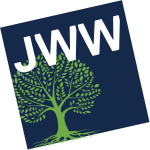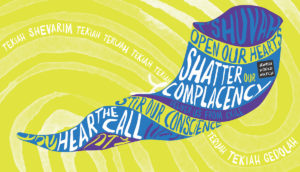Paul Wallace, in his essay entitled “Breathing Metaphors”, begins with the following exercise which I ask you to do along with me:
Settle yourself and breathe with me before we begin. Note how it feels. Pull the cool air in through your nostrils, moving the breath downward into your chest. Fill your lungs slowly and deliberately until they are completely full. Pause at this peak of fullness and ask, “What does it feel like to be full?”
With your full lungs, now breathe out. Allow the body-warmed air to move across your lips and tongue, noting the sound it makes. Breathe out slowly and deliberately until your lungs are completely empty. Pause at this nadir of emptiness and ask, “How does it feel to be empty?”
We live in breathless times. Every day we are rocked by COVID statistics, heartbreaking occurrences of man’s inhumanity to man, personal catastrophes, job loss, dreams deferred, uncertainty. As I wrote this, my phone lit up with a tweet from the CDC saying that “It is OK to not be OK”. I confess that I long for the day, hopefully soon, when life will feel OK again.
The High Holy Days, and COVID precautionary measures that required us to participate in services by Zoom made me think about how intricately involved we are actually and metaphorically with breath. We know that when God created Adam, the first person, from the mixed soils of the earth, he “breathed into his nostrils the breath of life; and man became a living being.” The words are important. It is not just that the dust that was Adam became animated; he was brought to life with both ruach, a spiritual energy and a neshama, a soul, after receiving God’s holy breath.
We use the metaphor of breath in so many ways. We are “breathless with anxiety,” we “hold our breath with anticipation,” we “breathe easy” when we are relaxed, we call someone a “breath of fresh air” when they are new or provide a novel slant on something.
Similarly, we refer to the absence of breath to suggest constraint, as in “I have to get away from this relationship because it is suffocating me,” or the presence of a dominating negative force – “she takes up all the air in the room.” We don’t just pass away – we “take our last breath.”
And of course, in these troubled times, the phrase “I can’t breathe” has become a rallying cry as well as a horrific expression of despair.
Jewish World Watch’s plea for the new year is that we, each of us, “become the Shofar,” not just for the holidays, but throughout the entire year.
The shofar has always been a source of great amazement to me. I get chills each year upon hearing its first notes and wonder how it is possible to make the variety of sounds that the ba’al tekiah makes. I cannot make even the barest of squeaks no matter how many times I have tried.
So, what does it mean to “become the shofar?” I offer a few thoughts.
First, the mitzvah of the shofar is not the blowing of it, but rather the hearing of its notes – puffs of breath designed to awaken and stir us to action. The ram’s horn is an empty vessel until it is filled with air just as Adam was mere earth until he received the life-giving breath from God. Second, the sounds of the shofar are strikingly distinct. We hear them as different messages, even though they come from the same source, the same air, the same breath.
The tekiah’s initial blast is rich and ceremonial. Many people compare it to the music played when a king comes out of the palace to greet his people. It is stirring. Get ready!
The shevarim’s staccato notes are markedly dissimilar. They feel like an irritating elbow to the ribs. Pay attention!
The truah’s almost discordant bursts are also strangely uncomfortable, a nag to move. Get going!
And then, finally, we receive the majestic tekiah gedolah – the long expiration of breath that seems endless and miraculous. Many of us clap and cry “Yasher koach,” marveling at the ability of one person to carry the moment with such strength.
And there you have it: Get ready, Pay attention, Get going, Be strong. This is how you can be the shofar. But let’s get a little more specific.
Tekiah: Get ready. This means to become educated, to learn about the troubles in our world and from whence they spring. Whether it is gender-based violence, mass atrocities directed at “the other” or the systemic ills of poverty, hunger, lack of education or access to the opportunities that provide resilience and capacity to rise up from an otherwise diminished life, we must arm ourselves with knowledge about why things go so terribly wrong and what we can do to make them right.
Genocide, marginalization, and human rights atrocities do not “just happen.” They have elements, precursors that are visible if we look carefully. The footprints of the Holocaust were apparent in news reports but were largely ignored or downplayed. The conflicts that led to the Darfuri genocide were obvious even before the first of the Janaweed militiamen mounted the first horse or camel.
Shevarim: Pay attention. There is so much happening in our world today that it feels impossible to keep up with it all. But even if you do not have the time to dive deeply into the underlying factors and current developments of the situations in Bangladesh (the Rohingya), China (the Uyghurs), Sudan (the Darfuris), Iraq (the Yazidis) or the political unrest and societal uncertainties made more dire by Ebola and COVID in the DRC, you can take 10 minutes to read the Global Updates which JWW sends by email each week. As our great sage once asked, “If not now, when?”
Then, Truah: Get moving. This is where you take action. Whether that means signing on to a petition, writing to a Congressmember, joining a committee, viewing a webinar, making a donation –YOU make a difference and just by acting you can be a source of inspiration for others. This November, join us for a full month of activities, including the virtual Walk to End Genocide. Every action we take makes an impact. Let’s make some great ones together.
And finally, Tekiah gedolah – the miraculous long, inspiring breath of connection. The word “inspire” shares its root with the words for breathing in and breathing out. Remember how we started today with the breathing exercise that put us in touch with how it feels to be empty and full? This year, let’s strive to live a life that is full, that is committed, that is strong. Let’s have the courage to be the shofar, to use the ruach and neshama that God has breathed into each one of us. That is how we become fully human. That is how we work in partnership with God – when we recognize that we all, no matter where we live or what we look like, are breathing the same air.


